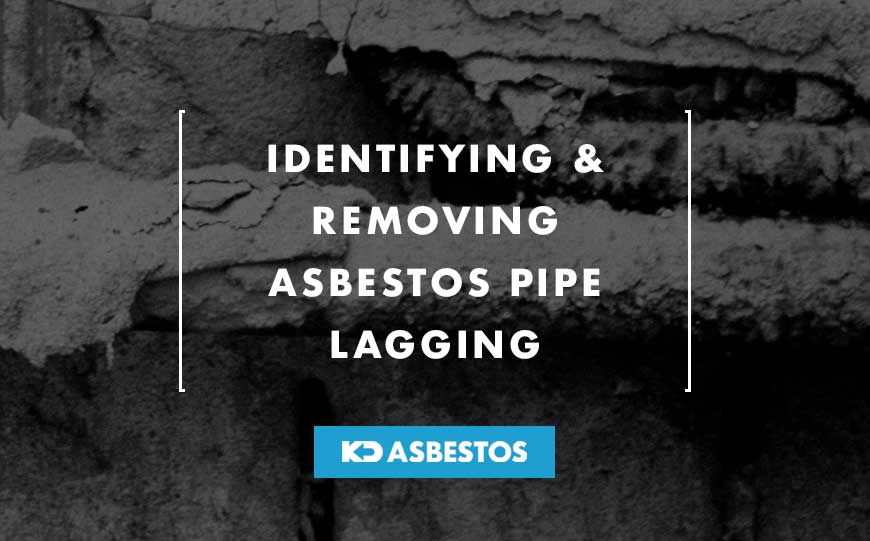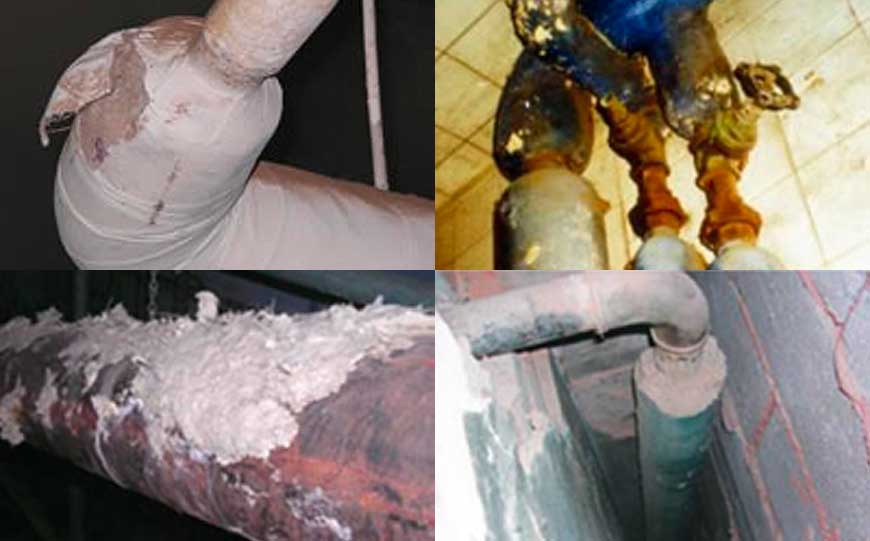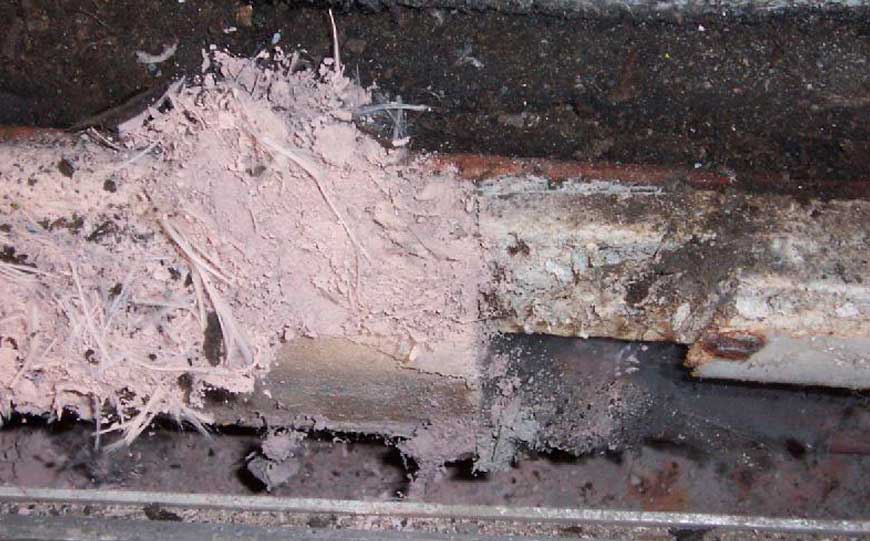
Wherever one suspects asbestos is present in a building or residence, there’s always an understandable concern for personal health and safety.
Should the material break or deteriorate, thus requiring removal, there’s always a substantial risk associated with the release of deadly asbestos fibres if disturbed..
Asbestos pipe lagging is regarded as one of the most dangerous types of asbestos containing materials.
But the good news is, it’s relatively easy to identify if present.
Table of Contents
What is asbestos pipe lagging?

Image credit: HSE
Asbestos has been known to be one of the most effective fire retardant insulation materials.
For this reason, it used to be very commonly used on pipes and similar utilities in order to keep them dry and improve their longevity.
Thanks to pipe lagging, the pipes could be protected from the heat and cold.
Since asbestos was also relatively affordable and easy to source, its usage was further increased back in the years when the health risks associated with the substance were unknown.
Where is asbestos pipe lagging found?
Asbestos pipe lagging is mostly found within heating systems.
Generally, it is used around boilers or calorifiers, and was also used around pipework in such systems.
It’s most commonly found in pipe systems that were installed between the 1970’s and 1980’s, although remarkably, asbestos was still in use until the year 1999!
Unfortunately, asbestos was heavily used as just one of many types of asbestos insulation.
And this is one of the areas in which we rarely pay much attention in our households, unless there’s something wrong such as a leak, blockage or breakdown.
Identifying asbestos pipe lagging

Asbestos pipe lagging is not particularly difficult to identify, just as long as you know what to look for.
It’s a predominantly a white fibrous material.
As a result, it can flake easily and end up breaking into a powdered form, thus becoming airborne and inhalable.
Understandably, its level of danger to health is considerably higher when compared with other types of asbestos containing materials.
Asbestos pipe lagging can often appear fluffy, but at times it can have a rather smooth texture as well.
In some cases, it may look like dried cement as it can appear quite lumpy.
Any such material on pipes matching this appearance should be considered as potential asbestos lagging and treated with extreme caution.
One important consideration is that when applied to pipework, the asbestos insulation is generally coated with a protective layer.
This can come in various colours, and may pose some difficulty in identifying whether asbestos insulation is present underneath or not.
In most cases, a licensed asbestos surveyor will be able to discern whether asbestos pipe lagging is present or otherwise.
Someone who is not fully trained or knowledgeable may be completely unaware of the potential dangers, or foolishly think there’s nothing to worry about.
This highlights the importance of always seeking expert help to ensure no risks are taken.
When was asbestos pipe lagging last used?
Asbestos was banned in the UK in 1999.
Prior to that, it was widely used in various types of construction projects, so there’s a myriad of asbestos containing materials all around us.
Anything constructed or installed in the 20th century, particularly between the 1970’s and 1990’s, has a high chance of containing asbestos.
Many UK homes were constructed during the 1970’s.
So if your house was built during that period, it was a time when asbestos was used extensively.
Over the 1980s, use of the material started to diminish as details began to surface about its dangers and the health risks associated with prolonged asbestos exposure.
Why was asbestos pipe lagging used?
Asbestos was commonly used in various kinds of construction projects throughout the UK and across the world.
It was often referred to as the ‘magic material’ as it had very unique properties, especially with regards to insulation, durability and heat resistance.
Indeed, its insulation properties made it an ideal material for pipes, as it helped to maintain temperatures and increase lifespan.
Moreover, since it was an easy material to use and considerably affordable, its use was further intensified way back when.
Is asbestos pipe lagging a serious health risk?

Image credit: Pexels
The reasons why asbestos is very dangerous as a pipe lagging is mainly because it can break easily and release powder like fibres into the air.
If this happens, the risks to respiratory health are considerable, causing debilitating symptoms.
As long as the material is not in bad shape, it is not an immediate danger.
However, if it has become friable, where the material is showing signs of breaking up, it’s best to be careful and have it removed if possible.
If such a material is disturbed, it can easily release asbestos fibres into the air.
Such fibres can then be inhaled and lead to various serious health risks.
If your pipes appear to be in a good condition, but you suspect that asbestos insulation may be present, it’s wise to ask a professional asbestos contractor to take a sample to verify this.
Should asbestos pipe lagging be removed?
Unless the pipes are in a bad condition, it’s best to leave them alone.
However, if there’s clear evidence of damage or deterioration, it’s important to seek professional assistance to take a sample of the substance to be sent for asbestos testing in a lab.
If the sample tests positive for asbestos presence, you will be given advice on the best way forward according to the condition of the pipework.
Should the asbestos pipe lagging need to be removed, this needs to be carried out under stringent conditions to ensure that safe removal and disposal is guaranteed.
Removal is a must if the lagging and insulation are evidently in a poor condition, visibly frayed and potentially releasing fibres.
Conclusion
As with any other asbestos containing material, the dangers are very real and should be taken seriously.
Hence, before you handle asbestos pipe lagging, make sure to seek help from a licensed asbestos removal company who will be able to test the material and recommend the best approach to take.
If you suspect your pipework is coated in asbestos lagging, contact us today for immediate assistance.